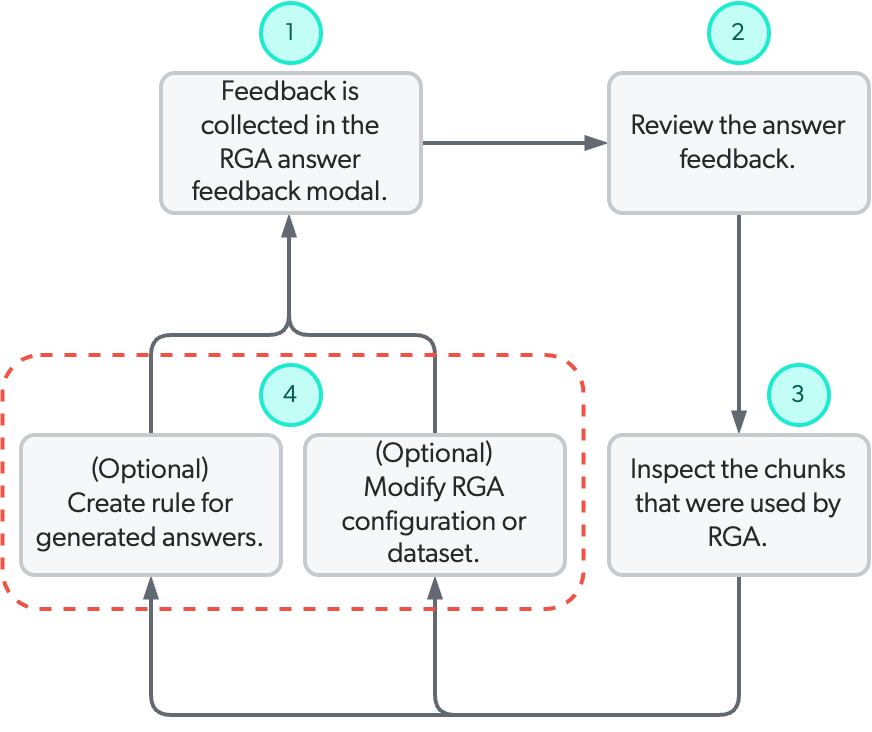Manage generated answers and improve your RGA implementation
Manage generated answers and improve your RGA implementation
|
|
The Coveo Knowledge Hub is currently available as a beta to early-access customers only. Contact your Customer Success Manager for early access to this feature. |
After reviewing the answer feedback and inspecting the chunks used to generate an answer, you may want to make adjustments to improve the generative-answering experience of your RGA implementation.
|
|
You’re here
In the improving your RGA implementation based on answer evaluation workflow, you can create rules, modify your content, and modify your RGA implementation configuration to improve the generative-answering experience. 
|
Depending on the improvements that need to be made to your RGA implementation, you can do one or more of the following:
-
Create a rule in an answer configuration in the Answer Manager. The rule you create impacts the RGA-generated answers for a specific search interface. For example, you can create a rule that prevents an answer from being generated based on the presence of a specific word or series of words in a query.
-
Modify the maximum number of items that the RGA model considers when retrieving the relevant segments of text (chunks) from which to generate answers. For example, you can decrease this value if you find that answers are being generated using text from low relevance items or documents.
-
Modify the relevancy threshold that’s used to determine whether a segment of text (chunk) is relevant enough to be considered by the RGA model for answer generation. For example, you can increase the threshold value if you find that answers are being generated using chunks of lower relevance.
-
Modify the content that you use for RGA. This is a general category that depends on your particular situation. However, here are some examples of changes you might want to consider:
-
Separate one long item into smaller items. This is useful if you find that relevant content isn’t being used by RGA because of the chunks per item embedding limit. Creating smaller items also keeps your items focused on one topic. If an item covers multiple topics, content may be considered as semantically similar when it isn’t. See the best practices for how to optimize your dataset content for RGA.
-
Update your content so it includes the most up-to-date information.
-
Create a new item to fill an identified gap in your content.
-
-
Modify the configuration of the query pipeline that’s used by RGA. This requires a good understanding of how the query pipeline configuration and rules impact search results.
-
Add a custom prompt instruction for your RGA model to better guide the generative LLM based on your use case. For example, you can add an instruction to tailor the answer to specific roles or audiences, adjust the tone or style of the answer, or provide restrictions so answers don’t mention sensitive information.